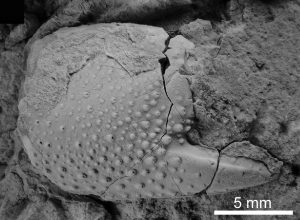
Methane seeps are places on the ocean floor where methane escapes from the subsurface into the water column. Such seeps, also called cold seeps, can be found at different depths in the oceans today and in the past. They are essentially the cold equivalent of hydrothermal vents. Bacteria and other organisms, such as clams and tube worms living in symbiosis with these bacteria, feed on this methane and create local hotspots of biodiversity. Seeps attract a variety of organisms such as fishes, gastropods, echinoderms, and crustaceans. Research on modern and fossil methane seeps has been booming over the last decade. We report on a ~30 million-year-old seep fauna from Peru. We describe 25 species of bivalves, gastropods, and crustaceans, bringing the total local seep fauna close to 40 species. Among those species, six species (2 bivalves, 3 gastropods, and 1 ghost shrimp) and one genus are new to science. Many genera in this hotspot of biodiversity can also be found in the northeastern Pacific around that time, showing a biogeographic connection to that area.
Kiel, S., Hybertsen, F., Hyžný, M., and Klompmaker, A.A. 2020. Mollusks and a crustacean from early Oligocene methane-seep deposits in the Talara Basin, northern Peru. Acta Palaeontologica Polonica 65: 109–138.